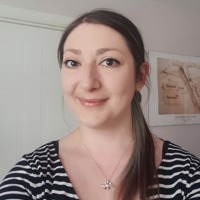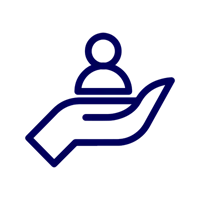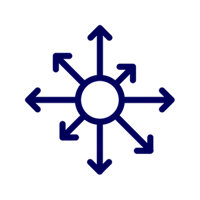
Information Management Consultant at Leidos
The thing I love the most is to work with my customers to understand their problems - and then solve them!
About Kristy...
Who am I?
"My personality matches are all key to my job role:As a Coordinator I am organised and pull people together to achieve the project outcomes. This can include my immediate team, but also others in the business who I need to report to, and the customer who I need to work with and understand, in order to communicate back to my team what we need to achieve in a project.Some of these aspects also relate to my match as an Influencer. I need to be conscious of each individual’s knowledge and experience in order to explain things clearly, so that they understand what they need to deliver or contribute to a project. I sometimes have to work as an intermediary between different various stakeholders, and have to balance different people’s requirements, which relies upon my diplomatic qualities.As an Investigator I enjoy solving problems by collecting information, researching options and working through the steps logically to find a solution. This often means working with my colleagues who may have different skills to me, learning from them and collaborating to find a solution."
What do I do?
"The majority of my work is for customers in Oil & Gas or Energy, but occasionally I also get opportunities to work on internal research and development projects.I have two aspects to my role - the first is to provide solutions to customers on how to manage and interpret their drawings, documents and data as an Information Management Consultant; and the second is to lead a team that creates and updates engineering drawings and graphics for use offshore and onshore.In both of these roles, the thing I love the most is to work with my customers to understand their problems - and then solve them! Most of the time we are working with customers in the Energy industry. It's really important that people can find the drawings and data they need to undertake their work safely - especially when they are often working in difficult conditions (such as offshore, working on a platform in the North Sea).For my role it’s especially important to understand who the end-user is for the work I am delivering, as different people may have different priorities or knowledge. If we are working on a project to enhance technical drawings and make them ‘intelligent’ on interactive we need to understand how the engineer will use the drawings. The questions we ask will be about user experience, perhaps using some technical language relating to the content of the drawings. If we are delivering a solution to an Information Management department to support them in moving 5 million drawings from one location to another, the focus may be more on understanding their processes and procedures.One of the most significant (and most enjoyable) parts of my job is to bring people together with different skillsets and knowledge to understand and solve a problem, and then act as the interface between my team and the customer."
How did I get here?
"My career path has taken a number of different turns, as I have learned more about the various job roles that exist. When I was studying I wasn’t aware that ‘Information Management’ was a career option, and if I had heard of it I may not have realised it would be something I would be interested in.I studied Architecture at University, but on graduating there were very few positions available for graduates from Architecture due to the financial climate. I spent a year delivering small architectural and product design projects, until discovering an opportunity in the Oil and Gas industry to produce some Electrical Drawings.I thought this would just be a short term job, while I continued job-hunting in architecture but this was my first significant step onto my current career path. First I was introduced to the Electrical Engineering team, where I updated their drawings for offshore platforms and an onshore processing plant. I found my workload was a bit light, so asked about additional work, landing myself in a new project which aimed to transform the way engineers searched for and worked with their drawings. The project brief was to provide a new user interface to search for the engineering drawings (think of something a bit like Google, with lots of different categories you can filter the results with). The drawings were made interactive with links, connecting them to relevant equipment information and related drawings. Throughout the project I delivered subject matter expertise on draughting software and drawing enhancement. I discovered that this area of work, acting as an interface between a number of different disciplines really suited me.From here I took on a more senior role leading a Draughting team, and more of my projects became focused on innovation and multidiscipline teams. My job roles became progressively more involved with business analysis, reviewing customer requirements for storing, connecting and finding their drawings and data; and the providing recommendations to customers.My job role as an Information Management Consultant today pulls together all my previous experience in working with engineering drawings, my training in architecture to work creatively and balancing a number of user’s requirements, and other various roles I have worked in along the way."
The life I live
"My spare time is mostly filled with art, cooking, music, travel and learning French. My creative side is still very much active, and I spend an amount of my spare time working on arty or creative projects. I’m interested in working with watercolours, pen and ink illustration, marker pens, photography, animation and filling sketchbooks with ideas.This ties into my passion for travelling, where I am often seen on holiday with an old fashioned film camera or a sketchbook in hand studying an interesting building or soaking up the atmosphere of a busy city. I also enjoy the outdoors both in Scotland and further afield, either cycling or walking in the hills."
My typical day
"My typical day is often spent working at my computer, leading problem-solving workshops with my team and drawings all over the whiteboards, or meeting with customers to report on project progress.I can use a variety of software in a day such as: AutoCAD to create or update engineering drawings (e.g. structural plans, mechanical arrangements, process diagrams, electrical schematics);Power BI or Excel to analyse data, review millions of files to generate reports and recommendations on how to surface the useful files, and identify any that are duplicates or those which should be removed;Adobe Illustrator or Acrobat to work of graphics, which could include escape route signs or illustrations for reports.A host of other software and tools can also be used, depending on the project I am working on. Sometimes software training is required in advance, and learning can happen on the job too.The majority of my time is spent working on projects, however I also need to allow some time in my week to report to my managers and my customers on our ongoing projects, and finances. As I have a leadership role, an additional responsibility is to make time to speak with the members of my team – even if we are currently assigned to different projects."
My qualifications
"Highers: Art, French, Physics, Maths and EnglishUniversity Qualifications: MArch Architecture (merit), BSc Architecture, Additional Qualifications: RIBA Part II (Royal Incorporation of British Architects), First Aid, IOSH Managing Safely, Nuix Data Discovery I left school at the end of 5th year, having already received confirmation of offers from Universities to study either Architecture or Art based on my 5th year Higher grades. I decided that my time would be best spent taking a year to gain a bit of life experience, while building up my portfolio by attending evening classes at Gray's School of Art.I decided to study Architecture over Art, because it suited both my interest in Art and creative tasks, but also my enthusiasm for solving problems with a technical aspect. Studying Architecture provides an opportunity to develop a whole host of different skills, including: communication skills, understanding what your customer needs, technically solving the design challenge and creatively designing and presenting your solution.These are all skills I still use today in my current role. "



